Video at the bottom of the article.
Friday Night Lights: The Dark Mile – Shooting A Mile At Night

Friday Night Lights: The Dark Mile – Shooting A Mile At Night
Posted 3 days ago in Editorial, Friday Night Lights by Nicholas C with 22 Comments
Tags: Long Range, One Mile Shot, thermal
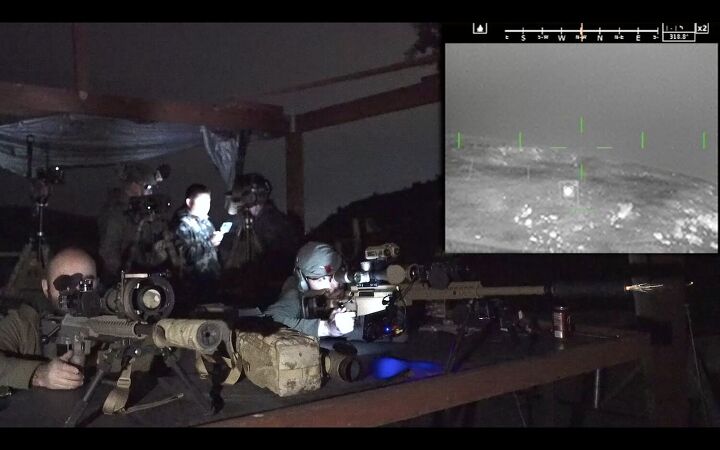
Welcome back FNL fans. What did you think about the East Coast Night Shoot? Are you thinking about going next year? If you are a fan of night vision and you want to check out some really cool gear, then it is the place to be. This week I am proud to share with you a milestone that my friends and I have achieved. We have successfully hit a target a mile away in the dark. The Dark Mile took multiple devices to make it happen and it was something we have been striving to do for a number of years.
Tech Used For The Dark Mile @ TFB:- Friday Night Lights: SAFRAN JIM LR – Cooled Thermal Biocular LRF
- Friday Night Lights: Shooting Long-Range Thermal – 1250 Yards
- Friday Night Lights: Sure Shot Night Vision’s PVS-27 Retube – White Phosphor Clip-On Upgrade
- Friday Night Lights: Trijicon/BAE OASYS UTCXII – Long Range Thermal Clip-On
- Friday Night Lights: Tricked-Out Spotting Scopes
- Failure Before Covid
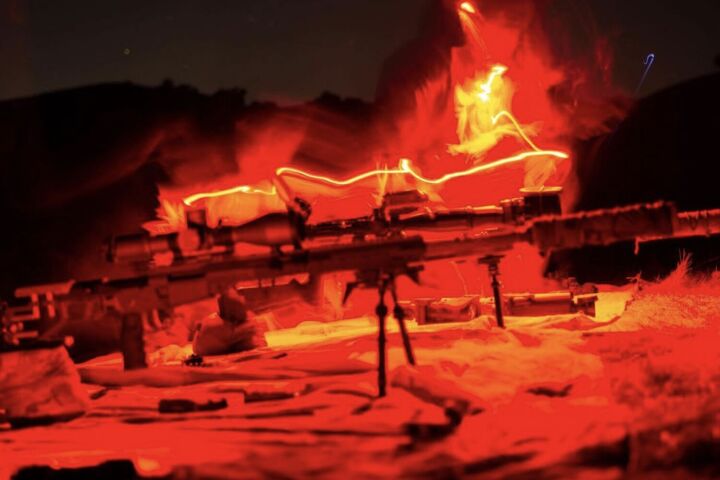
Photo by Sean
Below is Vic trying to hit the mile with his .260 Remington rifle, three years ago.
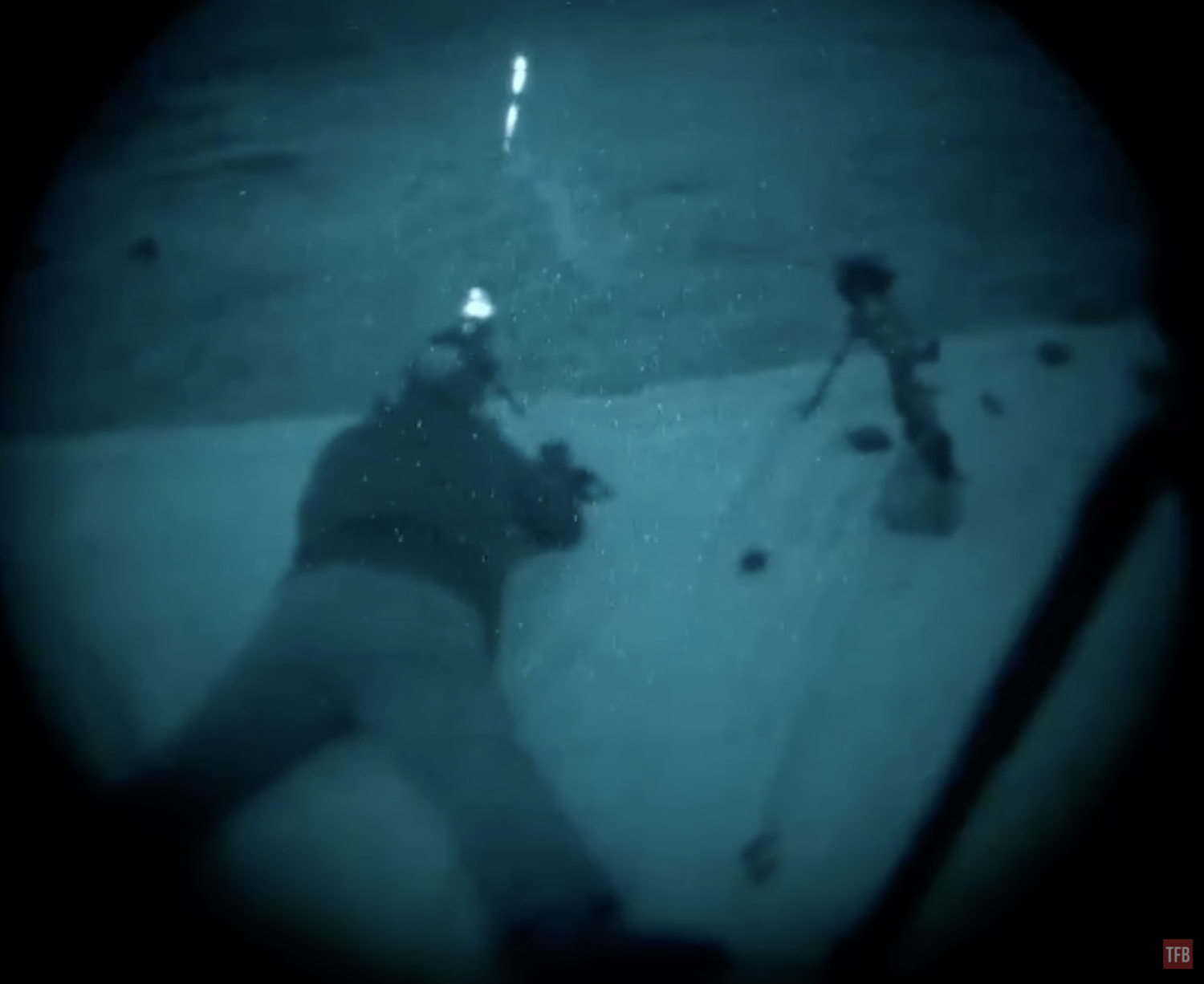
I had a number of illuminators. One was a 1,000mW laser but it was too bright. I even tried the Ace Beam W30 LEP flashlight. Both could illuminate the mile target and since the target was painted white it stands out against the darker background. However, both the IR illuminator and LEP flashlight were too bright. They wash out almost all the detail. We could not see where Vic’s rounds were landing so he could not make corrections to his aiming point.
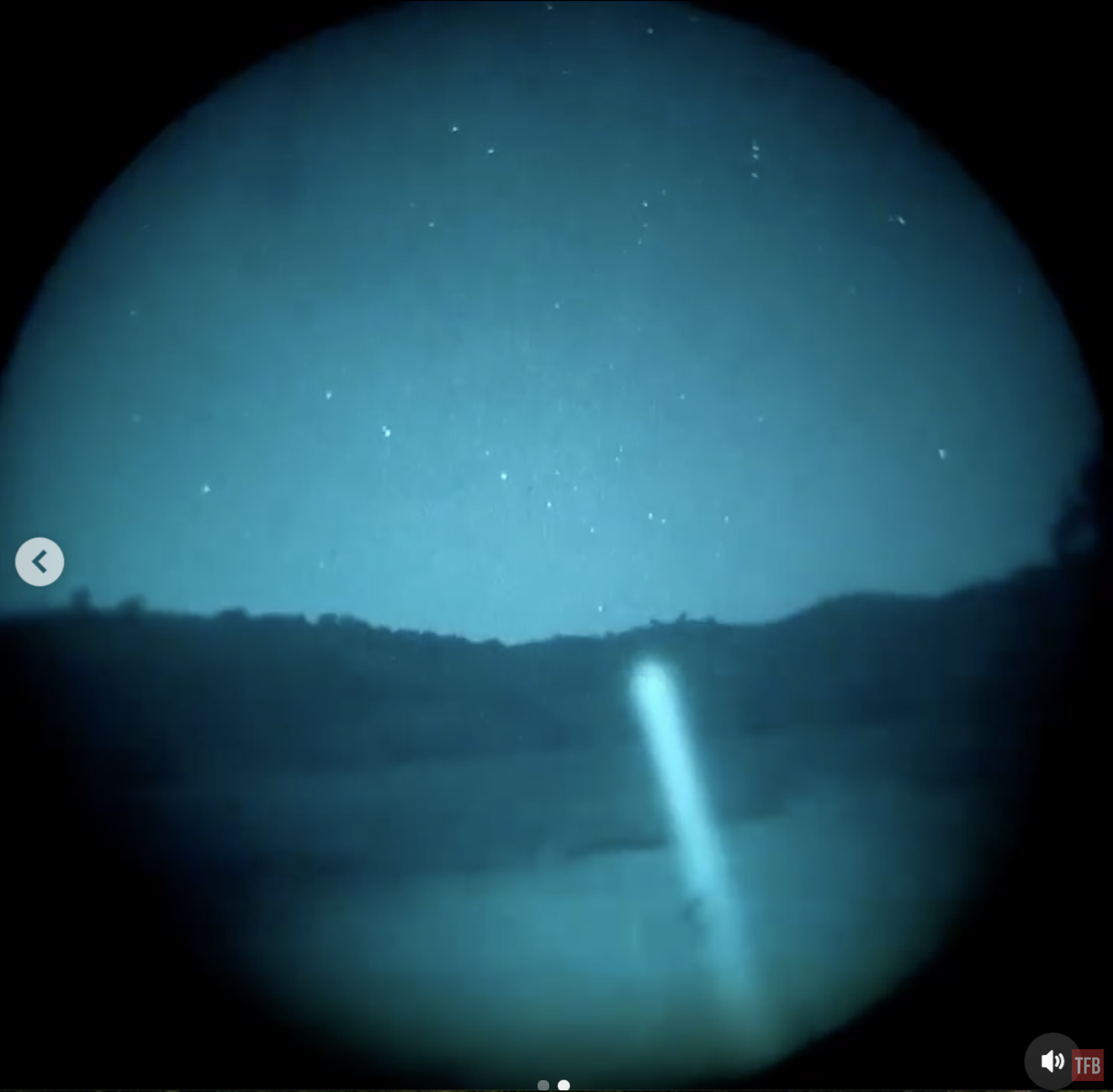
The Dark Mile Achieved
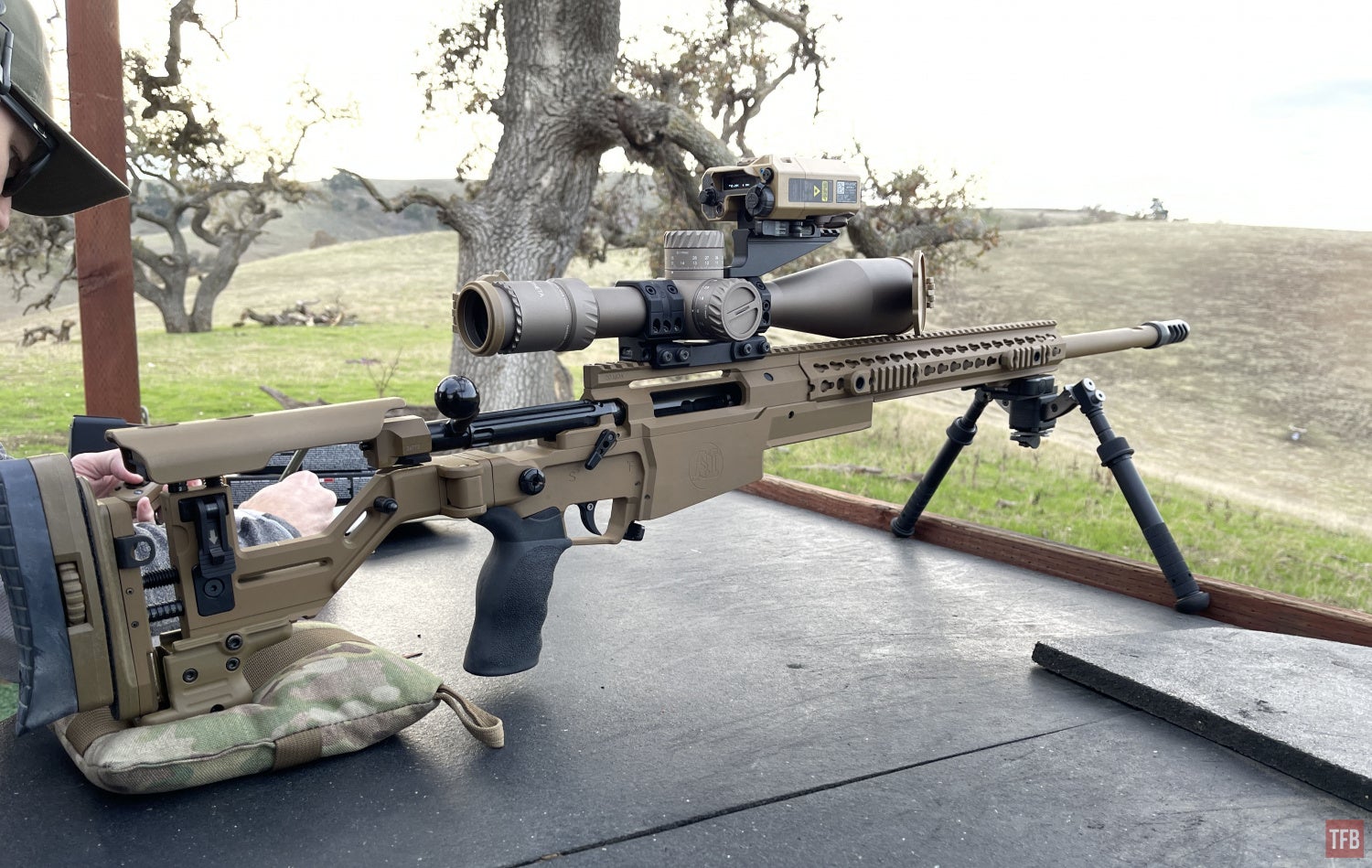
Kevin’s AXSR in .300 NM
In order to successfully hit a mile my friend’s brought out the big guns. Kevin acquired an Accuracy International AXSR in .300 NM. The gun and caliber are good to a mile but the challenge is seeing that far for the Dark Mile. Kevin used his Voodoo-M. If you recall I posted pictures of it in my UTC-XII review. Here is the photo below to refresh your memory.
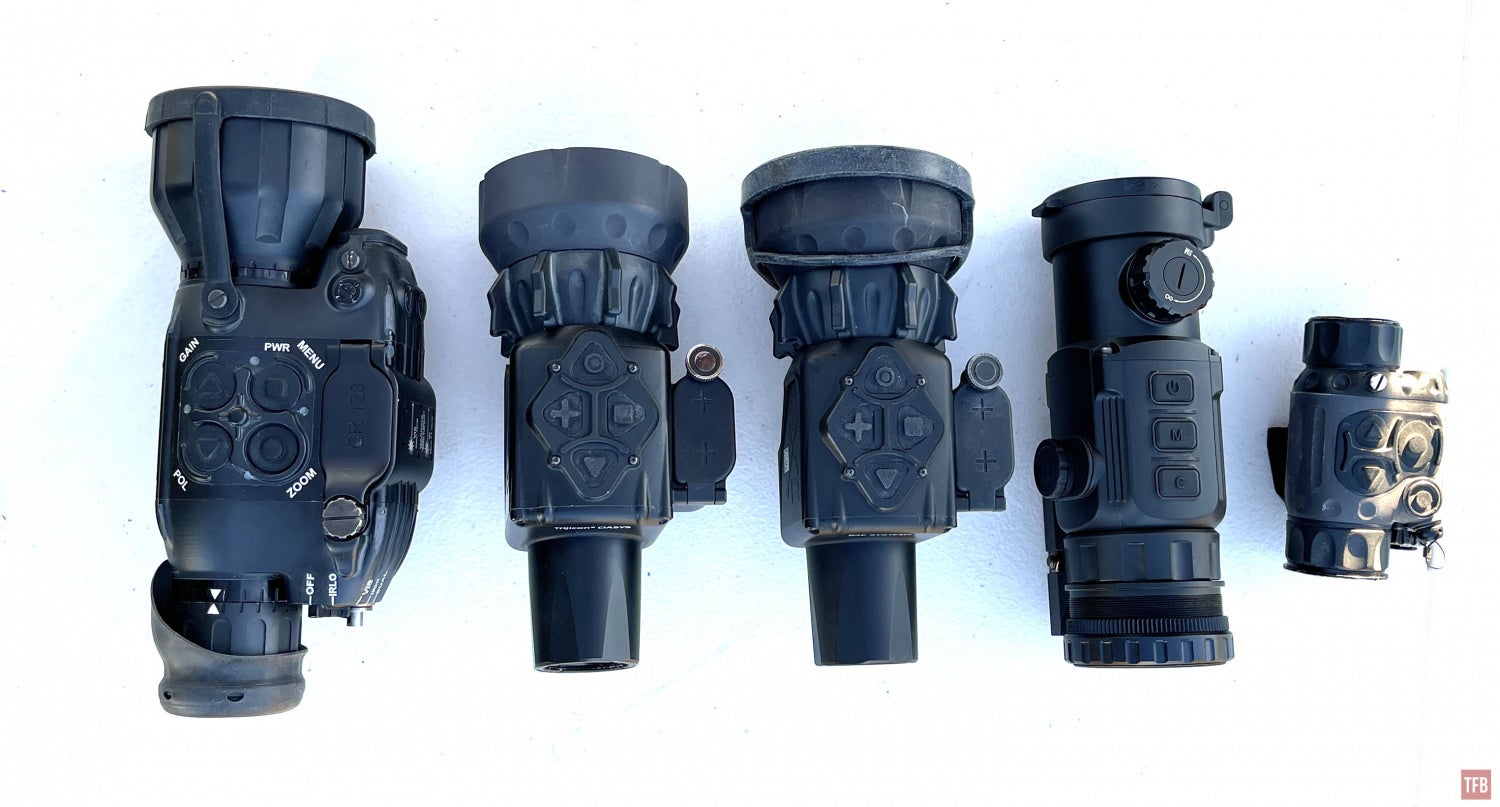
Voodoo-M on the left next to twin UTC-XII.
It was Kevin who successfully hit the steel in my 1250-yard article. He used his 6.5 Creedmoor rifle for that shot with the Voodoo-M as a thermal clip-on. Below is a screenshot from the Dark Mile, pulled from Kevin’s DVR that he has hooked up to the Voodoo-M. This is what he saw when looking through his scope of course without any magnification or reticle. Just the raw thermal image.
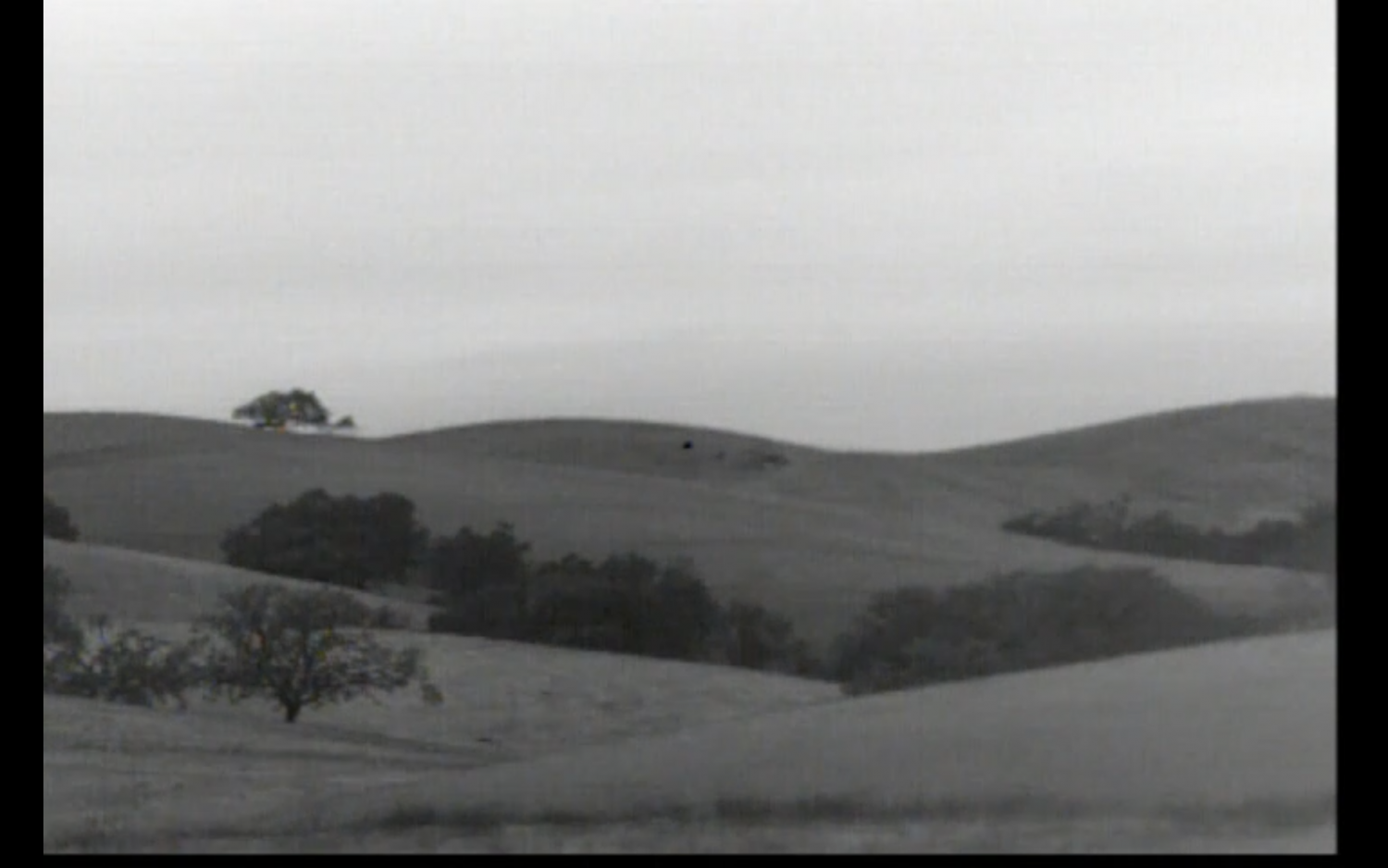
Photo by Kevin
The black dot is the Dark Mile target. Our friends Kythe and Ki went out and heated up the steel target with propane torches so it could show up easier in the Voodoo-M. The Voodoo-M is a LWIR thermal clip-on.
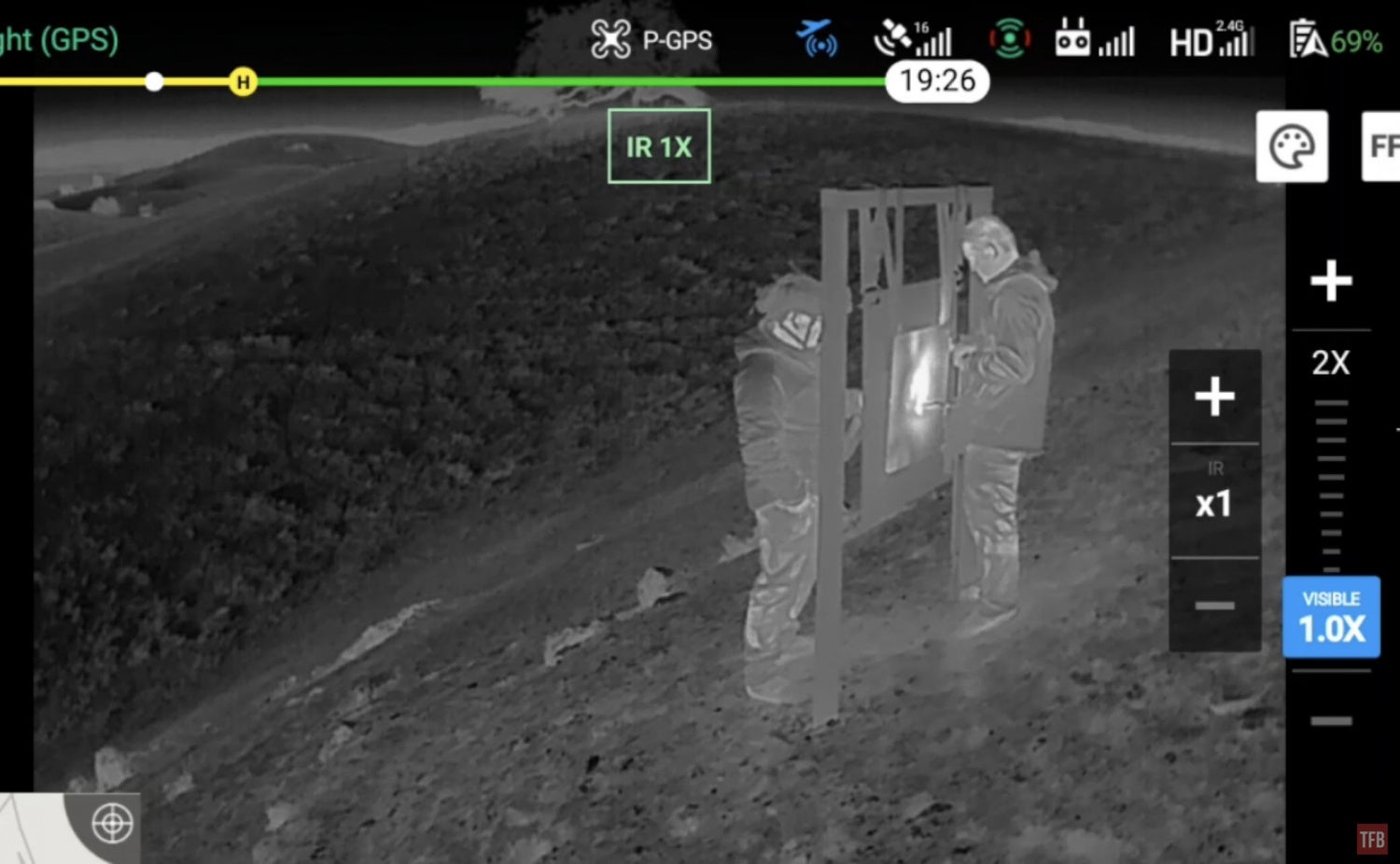
The circle is 18″ wide while the square is 36″ wide.
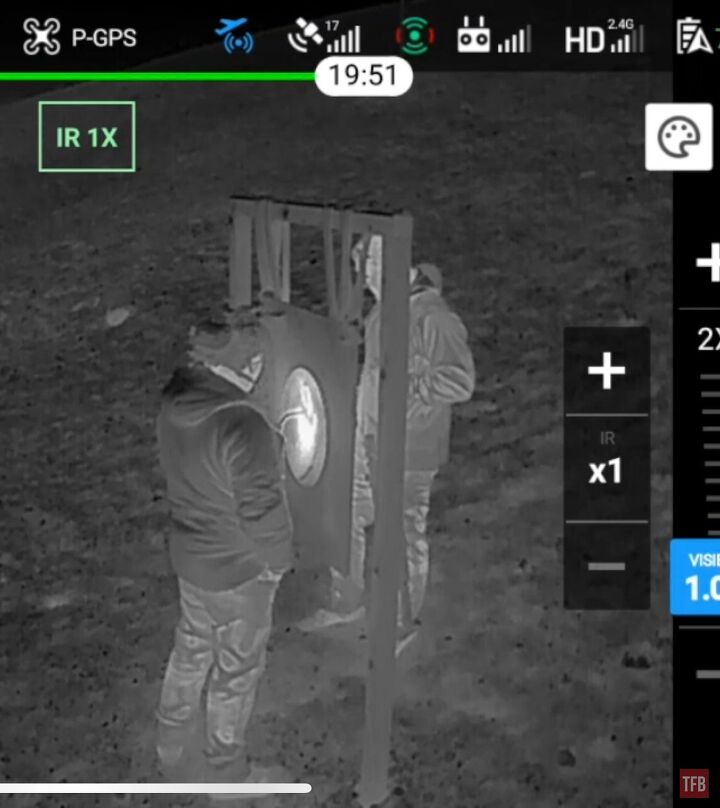
Vic brought out his Desert Tech SRS in .338 LM and we mounted my white phosphor PVS-27 which was retubed by SureShot Night Vision.
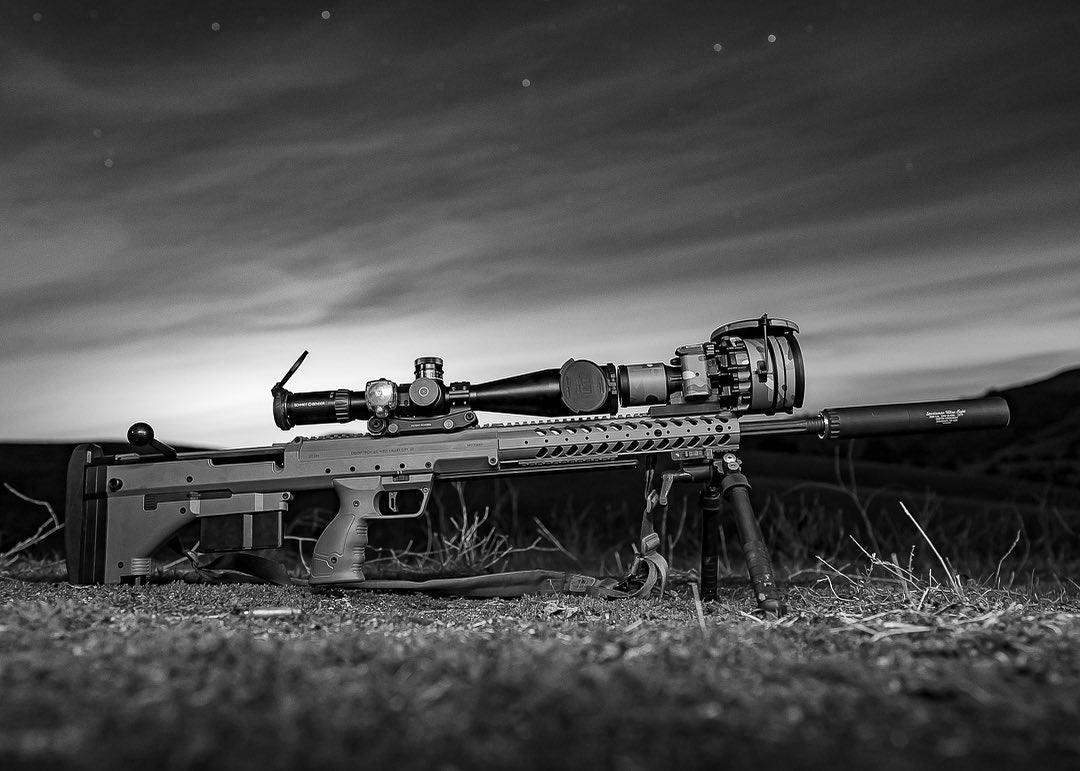
Here is a screenshot from Kevin’s iPhone filming through his tricked-out spotting scope. The faint pale blob above the reticle is the Dark Mile target.
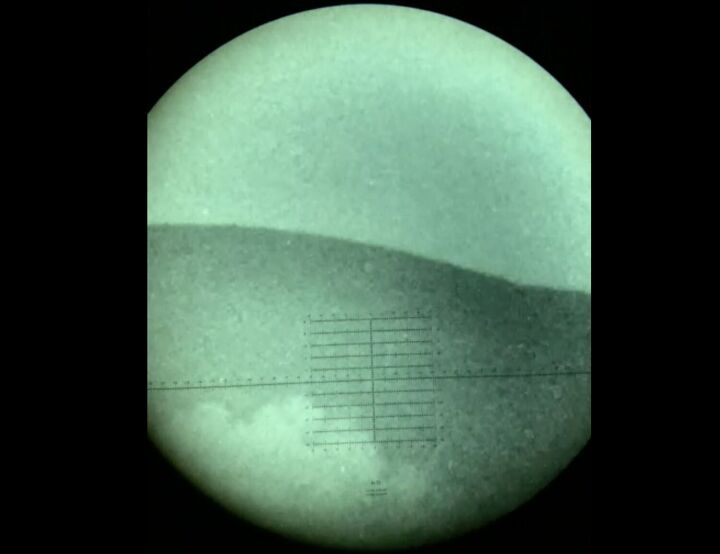
Photo by Kevin
We used Kevin’s RaidX to designate the target so Vic had something to aim at. There was little to no moon that night so it was challenging to see with the PVS-27 without the aid of the laser. Seeing the target in your sight picture is only part of the equation to successfully make a hit for the Dark Mile. If you recall when we tried this three years ago, seeing the target was not the problem. Seeing our misses so we could correct and make the hit was impossible. That was until now.
Vectronix LRTV to the rescue! If you recall I wrote about the JIM LR aka LRTV. Well, I acquired a second unit and this one came with the 2x focal magnifier. The new LRTV is still only 320×240 resolution but the afocal magnifier is a true superpower.
Here is a video clip from the last FNL. the LRTV with magnifier looking at a steel target array 700 yards away and 5.56 hitting the steel.
While this was impressive, I had my doubts about seeing a bullet flying out to a mile. I have only been able to see bullets out to 800 yards. And while I can see the bullet’s trace, it disappears pretty quickly. One aspect of the Dark Mile and the LRTV that I did not know at the time was if the bullet has enough heat out to a mile? Was the friction through the air enough to keep the bullet hot enough to see it?
Well, I am happy to say I was wrong. The LRTV with magnifier is the “Eye of Sauron” that Garand Thumb mentions in his video.
Here is the video of us shooting the Dark Mile.
You can clearly see the fragmentation and ricochet of the bullet. I was a little disappointed that we could not see the bullet itself as it lands. I am not sure if the bullet is cold or not. But it clearly shows up when it ricochets. But that could be heat imparted into the bullet as it crashes into the dirt, rocks or steel. Regardless, the LRTV with a focal magnifier was able to see dirt kick up from the misses and we could tell the shooter where they landed. Vic managed to hit the steel on his second shot with his .338 Lapua Magnum!
Earlier in the day, Kevin was getting dope on his .300 NM and he shot the furthest he has ever shot. He hit the 2200-yard steel target. Click here to see a video clip. The LRTV happened to be pointed at the target and it was recording while Vic and I nerded out over the LRTV. If you pay close attention you can see the hit and fragmentation of the .300 NM on the target.
Final Thoughts On The Dark Mile
Shooting out to a mile is an achievement all on its own but shooting a mile in the dark is a seriously complicated challenge. You need to see where you are hitting/missing so you can correct and make the hit on target. Without that crucial feedback, you are just blindly shooting in the dark. At last, we can shoot in the dark but now we are no longer blind. The Vectronix LRTV with focal magnifier is on a whole other level. This unit is over a decade old and is only 320×240 resolution! This shows you how powerful cooled thermal (MWIR) really is. I cannot imagine how much better a 640-resolution LRTV would be with the same magnifier.
Next up we plan to try shooting 2200 yards in the dark but this time we won’t heat up the steel target. Instead, we will use night vision for the shooter and designate the target with IR lasers. We have some ideas about illumination and will be testing various lasers to see if it makes a difference for the shooters. But we will definitely be relying on the LRTV and magnifier to help spot that far.

Nicholas C
Steadicam Gun Operator
Night Vision & Thermal Aficionado
Flashlight/Laser Enthusiast
USPSA competitor
Any questions please email him at [email protected]
Last edited:




